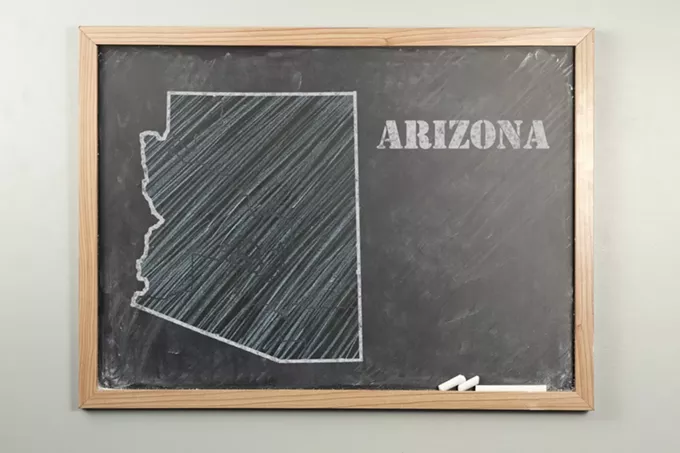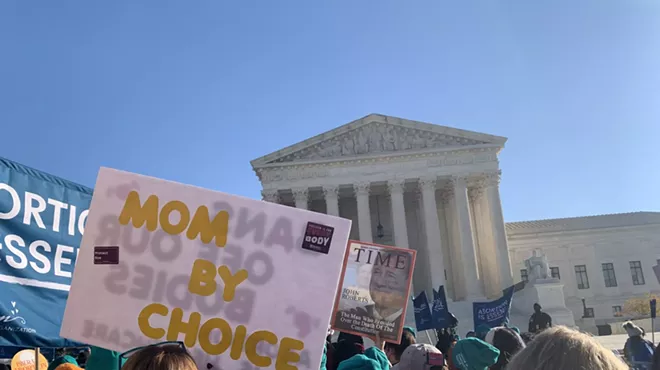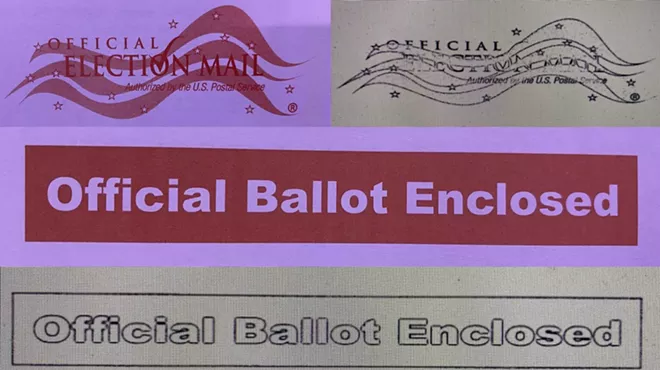Wednesday, November 3, 2021
Some Arizona lawmakers poised to lose out in redistricting draft maps
A number of incumbent lawmakers find themselves facing suddenly unfavorable electoral prospects under the proposed legislative map drawn by the Arizona Independent Redistricting Commission.
Some lawmakers who were previously in politically advantageous districts may now have to run in districts controlled by the other political party. Others remain in friendly territory from a partisan standpoint, but face potentially tough primary elections after getting lumped in with other incumbents who had previously been in different districts.
The district lines will change before they become final, giving a potential lifeline to legislators who hope to get better districts than the ones they got when the commission approved its official draft maps on Thursday. The AIRC on Nov. 6 will begin a 30-day public comment period to receive input on the maps. After that, the commissioners can revise the district boundaries before giving final approval to the congressional and legislative maps that Arizona will use for the next decade, a process they hope to complete by late December.
For a number of lawmakers, the draft map moved them into districts that strongly favor the other party.
The draft map moves Sen. Wendy Rogers, R-Flagstaff, from a conservative district that has never elected a Democrat into solidly blue District 6, which was drawn to ensure that Native American voters in northern Arizona, who heavily favor Democrats, can elect the candidates of their choice. Rogers’ home is about a half-mile from the nearest border of strongly conservative District 7, which includes most of the area she currently represents, leaving open the possibility that she could end up in a different district when the final lines are drawn. Some political insiders question whether she might move if that doesn’t happen.
Sen. Tyler Pace, a Mesa Republican, now finds himself in a marginally competitive but Democratic-leaning district. His home is less than two miles from the boundary of a staunchly conservative district that covers much of east Mesa.
In southern Arizona, Rep. Tim Dunn, R-Yuma, is now in a Democratic and majority Latino district, though one that is among the small number of competitive districts on the legislative map. A largely similar district that it replaces elected a Republican to the Arizona House of Representatives last year.
Also in southern Arizona, Democratic Sen. Andrea Dalessandro finds her Green Valley home moved from a heavily Democratic district to a likely insurmountably Republican one.
For some, running and winning in a politically unfriendly district is nothing new. Rep. Joel John, a Buckeye Republican, and Rep. Jennifer Pawlik, a Chandler Democrat, were both elected under the current map in districts controlled by their opposition. Pawlik’s new district, however, is among six that qualify as competitive under the AIRC’s metrics, while John’s new district is far more favorable to Democrats than Pawlik’s is to the GOP. John and Pawlik will likely both face incumbents from the other party in their elections next year.
John looked for the silver lining in his situation, noting that his new district is much more geographically compact than the one in which he defeated a Democratic incumbent last year to win his House seat. The district he represents now stretches from his area of the West Valley to northern Yuma. The proposed District 22 covers parts of Avondale, Buckeye and Goodyear, as well as more sparsely populated areas to the west.
“The party registration isn’t what I thought it would be. But I’m not losing any sleep over it,” John said. “It’ll be interesting. We’ll see what it looks like.”
Republican Sen. Sine Kerr, of Buckeye, would also move into the same Democratic district as John under the new legislative map. She currently represents a heavily Republican district.
Some face the prospect of friendly fire
Other lawmakers now face the prospect of running against fellow incumbents from their own parties who are no longer in separate districts from them.
Take District 3, which covers parts of north Phoenix, north Scottsdale, Fountain Hills, Anthem, Cave Creek and New River: Rep. John Kavanagh, R-Fountain Hills, has filed to run for the Senate seat being vacated by Sen. Michelle Ugenti-Rita, which will pit him against another incumbent Republican senator, Nancy Barto.
Kavanagh said the idea of running against Barto in a Senate primary doesn’t sit well with him, given that they’ve worked together for years and he considers her a friend. And two conservatives facing each other in that primary could tempt a more moderate Republican into the race, with a chance to win the seat.
He could avoid that fight by staying in the House, but that would force him into another GOP primary battle against other incumbents. Three other Republican House members will have to vie for the district’s two House seats: GOP Reps. Joseph Chaplik, Steve Kaiser and Justin Wilmeth are also in the same district, as is former Republican lawmaker Darin Mitchell, who is running again for the House.
Kavanagh said he won’t make a decision until he sees the final district lines, though he noted that major changes in the Phoenix area are unlikely, given that the AIRC’s disagreements over the legislative map largely center on Pima County.
“I’m going to be reevaluating where I’m running,” Kavanagh said.
A recent appointment to a House vacancy raises the stakes for next year’s Democratic primary in the new District 1, which covers a wide swath of central Phoenix. The Maricopa County Board of Supervisors appointed Sarah Liguori to fill a seat vacated by former Rep. Aaron Lieberman, who resigned to run for governor. Were Lieberman running again, he’d be in the new District 4. But Liguori lives in District 1, which is also home to two other incumbent House Democrats — Jennifer Longdon and Amish Shah.
Another recent appointment to fill a vacancy, which moved Tucson Democrat Stephanie Stahl Hamilton from the House to the Senate, sets up a potential primary battle between incumbents. Stahl Hamilton is now in the same district as Democratic Sen. Rosanna Gabaldon. There are currently no incumbent representatives in their district, which would allow one of them to head off a primary fight by switching to the House.
District 7, a sprawling, rural expanse that runs from the southern edge of Flagstaff down through parts of Gila and Pinal counties, may also see incumbents slugging it out in next year’s primary. Republican Reps. Brenda Barton, of Payson, David Cook, of Globe, and John Fillmore, of Apache Junction, all reside in the district.
Cook said a lot might change with his district. He said he’s unhappy that his mostly rural district includes part of the urban Phoenix area by taking in Apache Junction. If the lines do move, Fillmore could end up in a different district, leaving Cook and Barton as the only incumbents. And if he ends up in a district without an incumbent senator, Cook said he could run for the Senate instead of for re-election to the House.
“That’s why I haven’t filed to run for re-election because I’m not sure who’s going to be our state senator. That might be an open seat in our district,” said Cook, who can only run for one more term in the House due to term limits. “There’s still plenty of time.”
Cook said he is also considering running for mine inspector, which would leave Barton and Fillmore as the only House incumbents in their district.
Republican Kelly Townsend, of Apache Junction, is the only senator in District 7. But she’s less than a mile from another district that would put her back with east Mesa, which is in her current district. That would leave an open Senate seat in District 7. Or, if the AIRC makes revisions to the northern end of the district, it would take only a minor change to the lines in northern Arizona to put Townsend in the same district as Rogers.
District 13, which includes parts of Chandler and Gilbert, is home to two incumbent Republican senators, J.D. Mesnard and Warren Petersen. However, GOP Rep. Travis Grantham is the only incumbent House member in the district, leaving the possibility that either Mesnard or Petersen could switch chambers and run for the House, where both previously served.
Two Democratic senators, Sally Ann Gonzales and Lisa Otondo, live in the new District 23, which runs from Yuma to southern Tucson. Otondo has not decided whether to run again and may not seek re-election, according to her seatmate, Democratic Rep. Charlene Fernandez. But Fernandez is termed out of the House and said she is considering running for the Senate. Even if Otondo doesn’t run again, Fernandez could still have an incumbent Democratic senator to contend with in the primary, though Gonzales would also have the option of running for the House, since the only incumbent House member in their predominantly Democratic district is Dunn, a Republican.
There are also three vacancies that have yet to be filled, which could change the races in their districts. The House seat that Stahl Hamilton vacated when the Pima County Board of Supervisors appointed her to the Senate is open, as is the House seat of Clifton Republican Becky Nutt, whose resignation is effective today. And Rep. Randy Friese, D-Tucson, has also said he plans to resign.
Incumbents in the proposed legislative districts under the draft map
*Does not include lawmakers who are termed out or have announced that they aren’t seeking re-election to the legislature
Senate
Lela Alston (D)
House
Sarah Liguori (D)
Jennifer Longdon (D)
Amish Shah (D)District 2
Senate
None
House
Kelli Butler (D)
Judy Schwiebert (D)District 3
Senate
Nancy Barto (R)
House
Joseph Chaplik (R)
Steve Kaiser (R)
John Kavanagh (R)
Justin Wilmeth (R)
District 4
Senate
Christine Marsh (D)
House
None
District 5
Senate
Karen Fann (R)
House
Judy Burges (R)
Quang Nguyen (R)
District 6
Senate
Jamescita Peshlakai (D)
Wendy Rogers (R)
House
Jasmine Blackwater-Nygren (D)
Myron Tsosie (D)
District 7
Senate
Kelly Townsend (R)
House
Brenda Barton (R)
David Cook (R)
John Fillmore (R)
District 8
Senate
Juan Mendez (D)
House
Melody Hernandez (D)
Athena Salman (D)
District 9
Senate
Tyler Pace (R)
House
None
District 10
Senate
None
House
Jacqueline Parker (R)
District 11
Senate
Rebecca Rios (D)
House
None
District 12
Senate
None
House
Mitzi Epstein (D)
District 13
Senate
J.D. Mesnard (R)
Warren Petersen (R)
House
Travis Grantham (R)
Jennifer Pawlik (D)
District 14
Senate
None
House
Jake Hoffman (R)
District 15
Senate
None
House
Neal Carter (R)
District 16
Senate
T.J. Shope (R)
House
Teresa Martinez (R)
District 17
Senate
Vince Leach (R)
House
None
District 18
Senate
Victoria Steele (D)
House
Pamela Powers Hannley (D)
District 19
Senate
Andrea Dalessandro (D)
David Gowan (R)
House
Gail Griffin (R)
District 20
Senate
None
House
Andrés Cano (D)
Alma Hernandez (D)
District 21
Senate
Rosanna Gabaldon (D)
Stephanie Stahl Hamilton (D)
House
None
District 22
Senate
Lupe Contreras (D)
Sine Kerr (R)
House
Diego Espinoza (D)
Joel John (R)
Lorenzo Sierra (D)
District 23
Senate
Sally Ann Gonzales (D)
Lisa Otondo (D)
House
Tim Dunn (R)
District 24
Senate
None
House
César Chávez (D)
Robert Meza (D)
District 25
Senate
None
House
Richard Andrade (D)
Joanne Osborne (R)
Kevin Payne (R)
District 26
Senate
Raquel Terán (D)
House
Christian Solorio (D)
District 27
Senate
Paul Boyer (R)
House
Beverly Pingerelli (R)
District 28
Senate
None
House
Ben Toma (R)
District 29
Senate
None
House
Frank Carroll (R)
District 30
Senate
Sonny Borrelli (R)
House
Leo Biasiucci (R)
Arizona Mirror is part of States Newsroom, a network of news bureaus supported by grants and a coalition of donors as a 501c(3) public charity. Arizona Mirror maintains editorial independence. Contact Editor Jim Small for questions: info@azmirror.com. Follow Arizona Mirror on Facebook and Twitter.












